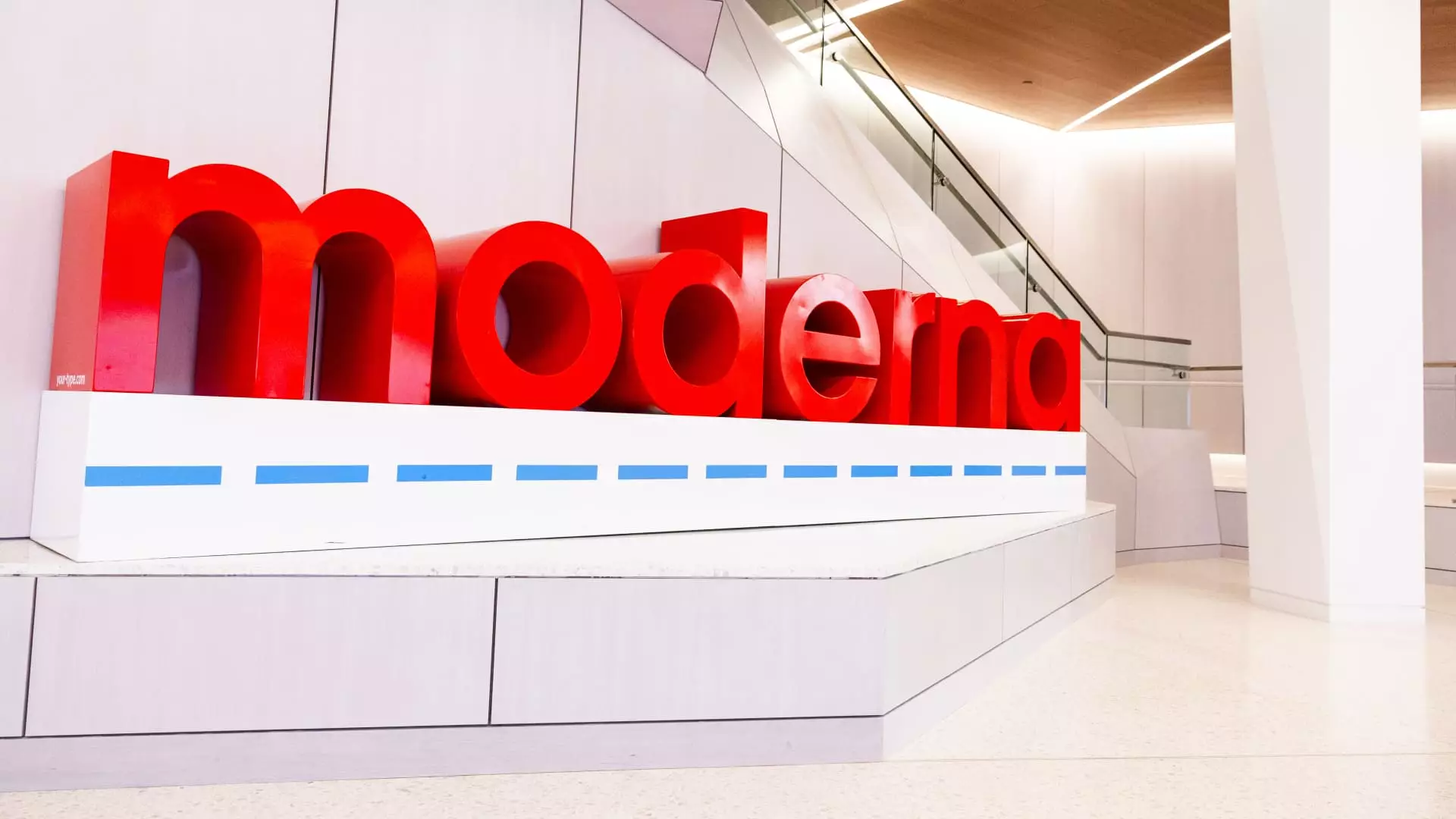Moderna, once a poster child for biotech innovation during the pandemic, is now facing significant financial setbacks as it transitions from a Covid-19-centric model to a more diverse product portfolio. After recently reporting its fourth-quarter results, the company finds itself grappling with a substantial net loss, alongside a notable decrease in sales from its flagship Covid vaccine. These developments raise questions about the sustainability of its business model and its ability to reclaim momentum in an increasingly competitive landscape.
In the fourth quarter of 2024, Moderna experienced a net loss of $1.12 billion, translating to a staggering $2.91 per share. This loss starkly contrasts with the $217 million in net income, or 55 cents per share, recorded in the same period the previous year. While the company’s revenue of $966 million exceeded Wall Street estimates of approximately $942.8 million, it represents only about one-third of what the company earned in the same quarter last year, showcasing an alarming 66% decline in Covid vaccine sales alone.
The loss reflects ongoing strategic costs-cutting measures, including a significant non-cash charge of $238 million related to the termination of a contract manufacturing agreement. CFO Jamey Mock noted the silver lining of these financial woes, highlighting a commendable 27% reduction in overall costs compared to 2023. However, the question remains whether these cost-cutting efforts can effectively steer the company back toward profitability, particularly when sales are forecast to dip further in the near term.
Shifting Market Dynamics and Future Projections
Moderna’s guidance for 2025 suggests a significant sales projection of between $1.5 billion to $2.5 billion, predominantly skewed toward the latter half of the year. The expectation of just $200 million in sales during the first half emanates from a seasonal downturn in respiratory product demand. This conservative outlook follows a severe markdown of nearly $1 billion from earlier projections, which sent the company’s stock spiraling down more than 20% year-to-date.
The revised sales outlook can largely be attributed to a wave of challenges: increased competition in the Covid vaccine market, dwindling vaccination rates, and timing associated with key manufacturing contracts. Additionally, uncertainty surrounding advisory recommendations for revaccination against respiratory syncytial virus (RSV) has compounded the pressure on Moderna’s pricing and sales strategy.
Breaking Down Vaccine Sales and Market Competition
In the fourth quarter, Covid-related vaccine sales accounted for $923 million, sharply down from the previous year’s performance. Understandably, entrenched competition and emerging concerns around vaccine efficacy and consumer willingness have negatively impacted revenue streams. Despite having initially established a powerful foothold in the market, high-profile rivals are beginning to chip away at Moderna’s market share, placing additional pressure on the company to innovate and diversify its offerings effectively.
Moreover, Moderna’s attempt to capitalize on its RSV vaccine saw $15 million in sales, outperforming initial analyst predictions of $13 million. Although this suggests a potential avenue for future growth, the sales contribution pales compared to the once-booming Covid vaccine figures. This serves as a stark reminder of the shifting landscape Moderna must navigate: from a singular focus on Covid to a multifaceted approach encompassing new and existing vaccines.
Looking to the future, Moderna is banking on its research pipeline. The company’s strategy hinges on advancing its messenger RNA technology platform to develop at least ten new product approvals within the next three years. This ambitious initiative includes three submissions for regulatory approval in the fourth quarter alone, targeting next-generation Covid shots, a combination shot for Covid and flu, and an RSV vaccine for younger adults.
While the anticipation of a potential approval for its next-generation Covid shot from the FDA in May could rejuvenate interest in the company’s offerings, it remains to be seen whether these advancements will translate into meaningful financial recovery. The ongoing challenges, combined with the need for innovation, highlight an important reality for Moderna: successfully pivoting its business model may depend as much on external market conditions as it does on internal advancements.
Moderna finds itself at a crossroads, contending with declining sales, increased competition, and a shift in public health priorities. As the company navigates these turbulent waters, the emphasis remains on innovation and effective cost management to reclaim a lasting foothold in the biotechnology landscape—an arduous journey, but one that may yield significant rewards if executed adeptly.

